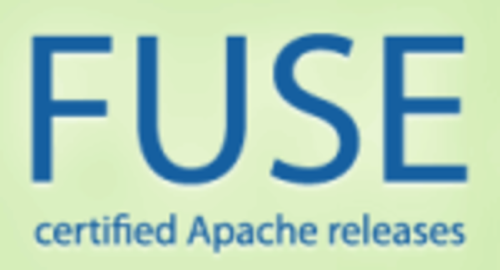Whenever you buy an airline ticket or book a hotel room these days, chances are that a good part of that transaction will run through Sabre‘s network. Sabre is one of the world’s largest suppliers of technology solutions for the airline and travel industry. What you may not be aware of, however, is that Sabre has made open-source software a cornerstone of its technology strategy. Sabre already relies on a number of open-source projects to handle thousands of transactions every second, and today, Sabre and Progress FUSE announced a new partnership that will make a number of FUSE’s open-source offerings a cornerstone of Sabre’s technology.

Sabre will use FUSE ESB, Message Broker, and Mediation Router for its Supplier-Side Gateway, which allows Sabre’s suppliers to interface with its services.
Sabre
Sabre may not be a household name, but if you recently booked an airline ticket or a hotel room, your transaction probably passed through Sabre’s massive network at some point or another. Sabre’s most well-known brand is probably Travelocity, but its Airline Solutions business provides services to over 200 airlines worldwide, and its Travel Network, which connects over 50,000 travel agencies and corporations, includes data from 400 airlines and 76,000 hotels. On any given day, Sabre’s servers have to be able to handle up to half a billion transactions a day and a peak volume that can go up to 32,000 transactions per second.
FUSE
FUSE’s offerings are commercial products based on a number of Apache Projects like ServiceMix, ActiveMQ, and Camel. FUSE actively participates in the respective developer communities and gives practically all of the code that it develops in-house back to these communities.
Why Sabre Prefers Open Source
We had a chance to talk to Sabre’s CTO Robert Wiseman earlier this week and discussed the company’s open-source strategy. Today’s announcement of its deal with Progress FUSE is a vital part of Sabre’s strategy. By default, Sabre only chooses off-the-shelf software as its last option if when no open-source solution is available. If there is neither an open-source nor an off-the-shelf solution, Sabre’s own technology team will provide an in-house solution.
Sabre, as Wiseman told us, prefers to remain vendor-agnostic, which not only allows Sabre to switch vendors if necessary, but also keeps vendors in competition with each other. From a support point of view, having access to the source code also allows Sabre to fix any problems in-house and on its own schedule, without having to wait for a vendor to come back with a patch.
Rock Solid
Interestingly, Wiseman pointed out to us, neither his own management, nor Sabre’s partners ever questioned the company’s use of open-source software in the mission-critical parts of its technology offering. Part of that, Wiseman noted, surely has to do with the potential cost savings of using open source products, but Sabre also puts every new addition to its technology lineup through a grueling set of long-term stability tests. Sabre, as Progress’ Debbie Moynihan proudly pointed out to us, can’t afford any downtime – and FUSE’s Supplier-Side Gateway, which currently handles about 1.5 million transaction a day, has now run on Sabre’s system for 14 months without any error.
Besides FUSE’s offerings, which are based on Apache products, Sabre also extensively uses Apache’s web server, MySQL, Hibernate, Terracotta and a number of other open source products. Also, two-thirds of Sabre’s 5000 servers currently run Linux and the company expects to expand this number over time.
It is great to see that a major corporation like Sabre has decided that open-source software is the right way to take its business forward. Sabre prefers to use open-source products that have a commercial vendor behind it, which validates the business model of a lot of open-source based companies. And if Sabre is willing to trust that open-source products like Progress FUSE’s offerings can work in its business, then this will surely be a sign for other enterprises to look more closely at open-source products and vendors in the future.










